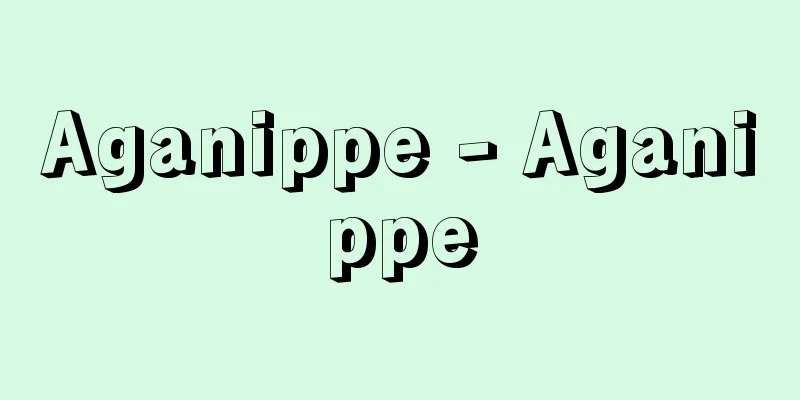Cousin marriage - cousin marriage

|
A marriage system in which it is desirable or even mandatory for an individual to marry someone who belongs to a particular kinship category. This type of marriage regulation or preference is called "cousin marriage" because the kinship category to which one should marry includes people who are considered "cousins," such as the daughter of one's mother's brother, and does not necessarily mean that one should marry an actual cousin, such as the daughter of one's mother's brother. Of course, there are cases in which such specific individuals are preferred, but cousin marriages usually include many more distant relatives than true cousins. Most of what is known as cousin marriage is "cross-cousin marriage," and there are three types. [1] Bilateral cross-cousin marriage, in which cross-cousins belong to a distinct kinship category from that of parallel cousins and marriage to the former is obligatory, is well known in the Carriera society of Australia. In its simplest form, it can be illustrated by a diagram of sister exchanges ( ), which are repeated every generation. In this diagram, a man marries a woman who is both the daughter of his mother's brother and the daughter of his father's sister. [2] Maternal cross-cousin marriage is a type of marriage in which the category of maternal cross-cousins (the daughters of one's mother's brothers) is further differentiated from the category of paternal cross-cousins (the daughters of one's father's sisters), and marriage to the former is obligatory and marriage to the latter is often prohibited. It is commonly seen in Southeast Asia. Simply illustrated, it is a one-sided exchange diagram ( ) in which one family is always the preferred bride for another family. [3] Paternal cross-cousin marriage is the reverse of [2], in which marriage to one's father's sister's daughter is obligatory or preferred, as is well known among the Trobriand Islanders. As can be seen in , the direction of exchange of women reverses with each generation. The issue of cross-cousin marriage has long been a topic of heated debate in anthropology. The very name cross-cousin marriage leads to the danger of treating this institution as a problem only at the level of individual relationships, such as "marrying one's mother's brother's daughter." As the simplified diagram shows, it is also possible to understand this institution at a more holistic level, as a form of intergroup solidarity through the exchange of women. In addition to cross-cousin marriage, there are also cases of a preference for parallel cousin marriage (marrying one's father's brother's daughter, etc.) among the Arab patrilineal Bedouin. [Mitsuru Hamamoto] ©Shogakukan "> Bilateral cross-cousin marriage (Caliera type) (matrilineal diagram)… ©Shogakukan "> Maternal cross-cousin marriage (patrilineal diagram) [Figure B] ©Shogakukan "> Paternal cross-cousin marriage (maternal lineage diagram) [Figure C] Source: Shogakukan Encyclopedia Nipponica About Encyclopedia Nipponica Information | Legend |
|
本人からみて特定の親族範疇(はんちゅう)に属する人と結婚することが望ましいとされ、あるいは義務づけられているような婚姻制度。こういった婚姻規制あるいは選好が「いとこ婚」という名でよばれるのは、結婚すべき親族範疇に「母の兄弟の娘」など、いわゆる「いとこ」にあたる人物が含まれていることによるものであり、かならずしも実際のいとこ、「母の兄弟の娘」などと結婚すべきであるとされているわけではない。もちろんそういった特定の個人が選好される場合もあるが、通常、いとこ婚の対象には真のいとこ以外に多くのより関係の希薄な縁者も含まれている。いとこ婚として知られているものの多くは「交差いとこ婚」cross-cousin marriageであり、これには三つの型がある。 〔1〕双方交差いとこ婚は、交差いとこの属する親族範疇が平行いとこのそれと区別され、前者との結婚が義務づけられているもので、オーストラリアのカリエラ人の社会が有名である。これは、もっとも単純化すると、各世代ごとに繰り返される姉妹交換の図()によって示すことができる。この図で、男の結婚相手は、母の兄弟の娘であると同時に、父の姉妹の娘であるような女性である。 〔2〕母方交差いとこ婚は、交差いとこのなかでも、母方の交差いとこ(母の兄弟の娘)の属する範疇が、父方交差いとこ(父の姉妹の娘)の属する範疇からさらに区別され、前者との結婚が義務づけられ、しばしば後者との結婚が禁じられているもので、東南アジアに多くみられる。単純に図示すれば、一つの家系が別の家系に対しつねに嫁のやり手となっているような一方的な交換の図()となる。 〔3〕父方交差いとこ婚は、〔2〕の逆で、父の姉妹の娘との結婚が義務づけられている、あるいは好まれるもので、トロブリアンド島民の例がよく知られている。にみられるように、各世代ごとに女性のやりとりの方向が逆転する。 交差いとこ婚をめぐる問題は、古くから人類学における白熱した議論の的であった。交差いとこ婚という呼称自体、この制度を「母の兄弟の娘との結婚」などといった形で個人関係的なレベルのみで問題にしてしまうという危険に導く。単純化された図からもうかがえるように、この制度を女性の交換による集団間の連帯というより全体的なレベルでとらえることも可能であろう。なお交差いとこ婚以外に、アラブの父系ベドウィンの間でみられる平行いとこ婚(parallel cousin marriage、父の兄弟の娘などとの結婚)選好の事例がある。 [濱本 満] ©Shogakukan"> 双方交差いとこ婚カリエラ型(母系の図)… ©Shogakukan"> 母方交差いとこ婚(父系の図)〔図B〕 ©Shogakukan"> 父方交差いとこ婚(母系の図)〔図C〕 出典 小学館 日本大百科全書(ニッポニカ)日本大百科全書(ニッポニカ)について 情報 | 凡例 |
<<: Erkki Itkonen (English spelling)
Recommend
Beach swimsuit
A general term for clothing worn by men and women ...
Ukusumiharu
…During the time of Uku Satoru, they expanded the...
Fire alarm - Fire alarm
A device that reports the location of a fire to a ...
Supersensitization - Supersensitization
…The mechanism by which energy is transferred fro...
Kawachi Dynasty
...The 15th emperor. Son of Emperor Chuai, his mo...
Cow and horse cutting and unraveling
…Dajokan Decree No. 295, which prohibited human t...
Coastal Fisheries Development Law - Coastal Fisheries Development Law
... Japan's fishing industry, which has expan...
origin and destination survey
...A survey conducted to understand the origin an...
Kinonii - Kinonii
Year of death: 11/10/11 (1166/2/12) Year of birth:...
Forgiveness - Kyokusha
〘Noun〙 ("Kyoku" means "part") ...
yagé (English spelling) yage
...The vines of the Banisteriopsis caapi and B. i...
Java Sea - Laut Djawa
The area is surrounded by islands such as Indones...
Pacheco
Spanish portrait painter and religious painter. Bo...
Kyogenzukushi - Kyogenzukushi
…Published in 1678 (Enpo 6). Also known as Kyogen...
Picture scroll - Emakimono
These scrolls are primarily pictures depicting sto...









